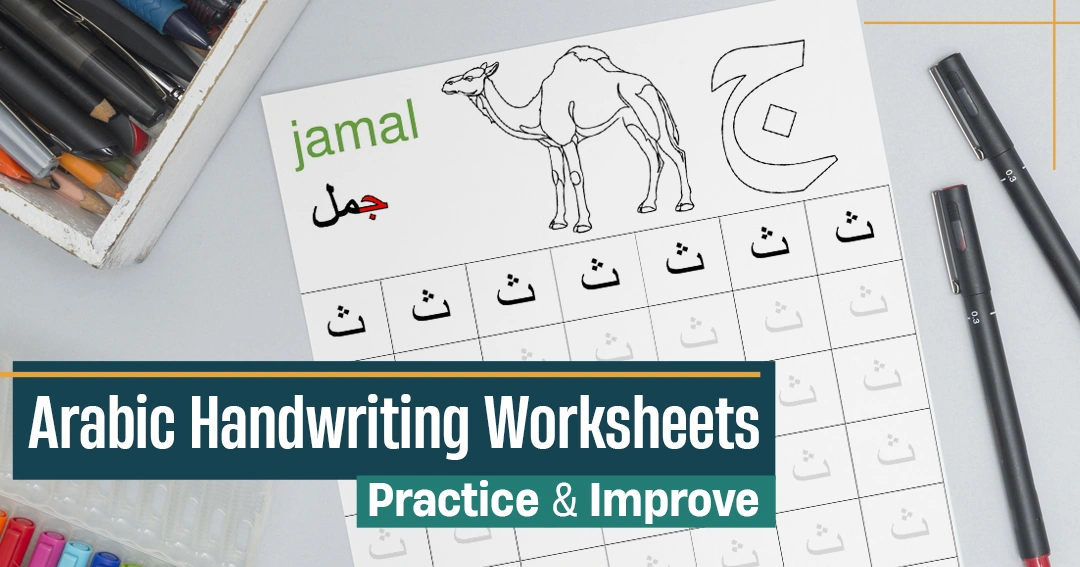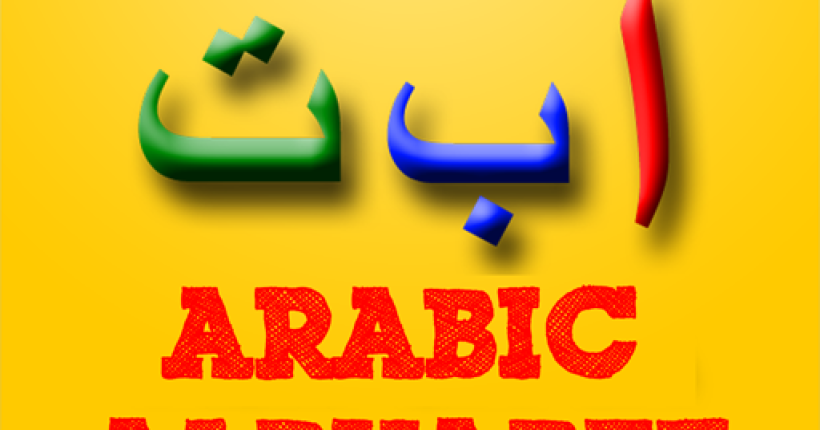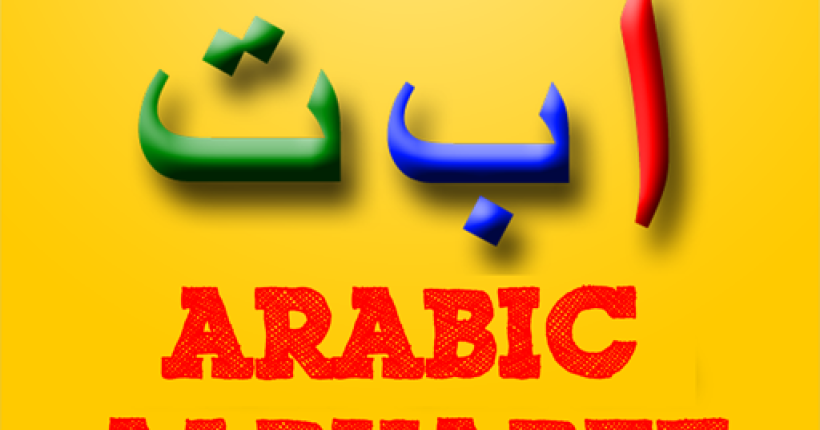Arabic Alphabet Worksheets are one of the best resources for students who want to learn Arabic handwriting with confidence. You can be a beginner or teaching a kid, but these worksheets give you a simple, organized way to practice every letter in a step-by-step manner.
In this article, we will explain how to make the most from Arabic handwriting practice, and why using the correct worksheets can be the game-changer for your learning journey.
Why Practice Arabic Handwriting?
Practice in Arabic handwriting is a critical step for any student of the language, especially for beginners. Reading is helpful, but handwriting out every letter by hand helps you memorize its shape, form, and flow.
That’s where Arabic Alphabet Worksheets come in handy, they offer a guided way of transforming recognition into proficient writing.
One of the major benefits of handwriting practice in Arabic is the building of muscle memory. Arabic letters change shape depending on their position in a word, and writing them repeatedly with Arabic Alphabet Worksheets makes it easier to remember these shapes.
Instead of passively looking at the letters, you actively engage with them, stroke by stroke. For learners, especially children or visual learners, handwriting during learning enhances the auditory and what is read.
Practicing with structured Arabic Alphabet Worksheets, you’re not only improving your handwriting, but building a strong foundation in the language too.
Worksheets that incorporate vowel markings (harakat) are very helpful, as it makes reading out loud more comprehensible while writing.
What Are Arabic Alphabet Worksheets?
Arabic Alphabet Worksheets are an efficient learning tool meant to help learners recognize, draw, and write the Arabic alphabet with confidence.
As a beginner student of Arabic or as one helping a young child learn to write at early school age, the worksheets present a guided method of working through the writing system, straight from the first letter (Alif) through to the last letter (Ya).
Each worksheet tends to focus on one letter at a time, showing it in its standalone, first, middle, and last positions. This is especially important because, unlike English, letters in Arabic alter their shape depending on where they occur in a word.
Getting students to practice with Arabic Alphabet Worksheets ensures that they get used to these shapes through repeated, hands-on practice.
Generally, most Arabic Alphabet Worksheets include dotted letters for tracing, ample space for writing, and often visual cues or images to associate each letter with a familiar object or word.
For example, a worksheet on the letter ب (Baa) might include an image of a بطة (duck) to allow students to associate the sound with a meaningful word.
Key Features to Look For in Arabic Handwriting Worksheets

Choosing the best Arabic Alphabet Worksheets can significantly decide how well and how quickly you will be able to learn writing. The following are the best options to look out for when making your selection:
1. Clear and Large Letters for Tracing
Look for Arabic Alphabet Worksheets that provide heavy, bold letters with tracing dotted lines. This enables students to become familiar with the lettering sequence as well as distinct Arabic letter shapes.
2. Letter Position Variations
Arabic letters change shape depending upon where they fall within a word, beginning, medial, end, or stand-alone. Top-notch Arabic Alphabet Worksheets need to reflect all four positions, challenging students to mastery of full realization of each letter’s shift with context.
3. Vowel Marks (Harakat) as Support for Pronunciation
Understanding how to pronounce every letter is as important as writing it. Worksheets that include harakat (vowel signs) help students associate the letter with its correct sound. This makes Arabic Alphabet Worksheets more effective for writing and speaking practice.
4. Visual Aids and Word Associations
Worksheets integrating letters with images or words (e.g., ب for بطة – duck) are more memorable, especially for early learners. Visual reminders like this strengthen vocabulary and letter-sound connection.
5. Incremental Difficulty and Letter Joining Practice
Start with the easy ones and slowly progress. Look for Arabic Alphabet Worksheets beginning from separate letters and slowly leading to joining letters as syllables and words. It is a highly effective means for beginners to gain confidence and become proficient.
How to Use Arabic Alphabet Worksheets Effectively?

Practice with Arabic Alphabet Worksheets is not just tracing letters, it is building long-term skills through consistent, focused practice. Whether you are learning Arabic on your own or are a teacher teaching a child, this is how to maximize every worksheet.
1. Start with a Simple Routine
Consistency is the key. Spend 10–15 minutes daily practicing your Arabic Alphabet Worksheets. Start with small steps to develop a habit that does not look too overwhelming. Even one letter a day can make real progress in the long term.
2. Focus on One Letter at a Time
Do not rush. Begin with isolated letters and ensure that the student can write, trace, and recite each one confidently. Most Arabic Alphabet Worksheets are composed to promote letter identification by repetition, so encourage repetition of each sheet a few times.
3. Say It While You Write It
Link speaking to writing. As you writing a letter on your Arabic Alphabet Worksheets, give it a name and pronounce its sound out loud. This makes memory and pronunciation assistance, especially if vowel marks (harakat) are included.
4. Use the Worksheets with Other Learning Aids
Combine Arabic Alphabet Worksheets with flashcards, listening, and games to create a full learning experience. Several students in Tareequl Jannah Academy benefit from this multi-sensory approach, which promotes retention and encourages learning.
5. Practice Letter Chains
Practice chaining letters together after practicing each letter individually. Some Arabic Alphabet Worksheets include word-building exercises illustrating how letters join in different positions. Reading and writing ease are based on this step.
Recommended Arabic Alphabet Worksheet Resources

If you’re just starting your Arabic learning process, acquiring the right resources makes all the difference. There are plenty of Arabic Alphabet Worksheets available online, but not all of them possess the structure and quality that facilitates real improvement.
To avoid wasting your time, here are some recommended resources that students actually benefit from.
1. Learning Printables from Reliable Language Blogs
Many websites and blogs in which Arabic is learned provide printable or inexpensive Arabic Alphabet Worksheets for independent study.
These typically feature tracing of the letters and essentials of vocabulary. But always seek out worksheets that show all the forms of each letter (initial, isolated, medial, final) to cover thoroughly.
2. Arabic Learning Apps with Printable Worksheets
Some of these educational apps also have printable add-ons in the shape of practice sheets. Apps like “Learn Arabic for Kids” or “Write It! Arabic” usually complement downloadable practice sheets.
3. YouTube Channels with Free Practice Packs
There are YouTube channels run by Arabic instructors that offer free video lessons along with downloadable Arabic Alphabet Worksheets. These can be a great option for visual learners who prefer to follow along.
Fun Activities to Reinforce Handwriting Practice
Learning does not necessarily have to be tedious! In fact, combining Arabic Alphabet Worksheets with enjoyable activities can reinforce learning and keep motivational levels high. Below are some efficient and enjoyable ways to enjoy handwriting practice:
1. Arabic Letter Art Projects
Have students decorate each letter that they practice! Once they’ve practiced their Arabic Alphabet Worksheets, give them colored paper, crayons, or glitter to make a mini craft project based on the letter of the day.
For example, they could cut out the letter ج (Jeem) and include pictures of words associated with it like جمل (camel).
2. Tracing Letters in Sand
After they have completed filling in a worksheet, ask them to trace the same Arabic letters with their finger on a tray of sand. This sensory exercise is fun and marvelous for developing muscle memory, just right for children!
3. Letter Matching Games
Create cards containing Arabic letters in all their different forms (initial, medial, end, isolated) and have the students match them. This reaffirms what they have been doing on the Arabic Alphabet Worksheets but turns it into a fun exercise.
4. Arabic Alphabet Bingo
Make a Bingo card with letters from the Arabic alphabet instead of numbers. Announce a sound for a letter and get the students to shade in the corresponding one. You can even utilize common words on their worksheets to challenge them.
5. Handmade Flashcards with Tracing
Have students make their own flashcards once they’ve finished a worksheet. They print and write the letter on one side and draw a picture of a word that starts with the letter on the other. This is a double whammy of handwriting and vocabulary.
Conclusion
Acquiring Arabic handwriting is a process, and every step counts. Utilizing the use of carefully developed Arabic Alphabet Worksheets, students are empowered to build strong foundation skills that will sustain them through reading, writing, and understanding the Arabic language more deeply.



